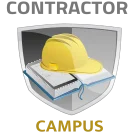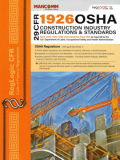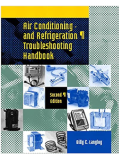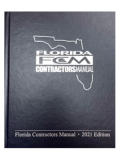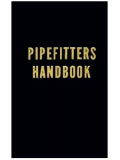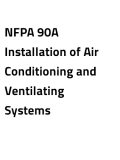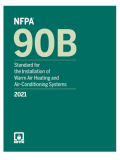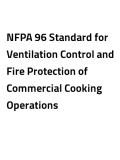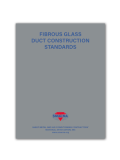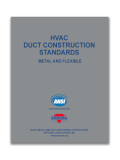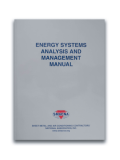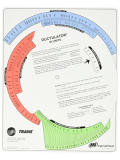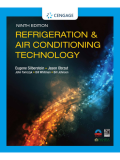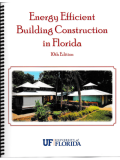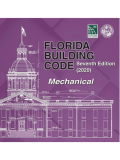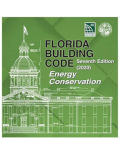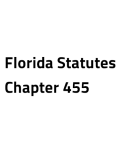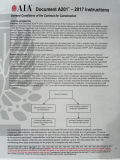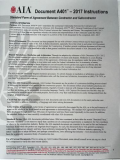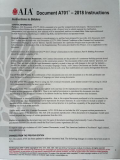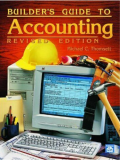Florida Class B Air Conditioning Contractor License
Florida Class B Air Conditioning contractors can legally engage in contracting involving the following type of work:
- Central air-conditioning systems
- Heating
- Ventilating
- Refrigeration
- Ductwork for air-distribution systems
- Duct cleaning and equipment sanitizing requiring disassembly of the system
- Piping
- Pipe, vessel, and duct insulation
- Connect/disconnect and replace power wiring (load side of the dedicated Existing electrical disconnect switch)
- HVAC control wiring (Low voltage)
- Condensate drains from AC to waste disposal (no direct connection to sanitary system)
- Excavation (as needed to complete AC installations, maintenance or repair)
- ONLY disconnecting or reconnecting changeouts of liquefied petroleum or natural gas appliances within buildings
- A Class B air-conditioning contractor may test and evaluate central air-conditioning, refrigeration, heating, and ventilating systems, including duct work
- The Class B License scope does not include:
- Potable water lines
- Liquefied petroleum or natural gas fuel lines within buildings
- Sanitary sewer lines
- Swimming pool piping and filters
- Electrical power wiring
Class B Air Conditioning contractors cannot install systems bigger than 25 tons of cooling or 500,000 BTUs of heating.
How to Get a Class B Air Conditioning Contractor's License in Florida
- Be 18 years of age.
- Pass all parts of the exam(s) (within four years of the first attempt).
If an applicant has a Bachelor's degree in building construction or a related field, as well as a 3.0 GPA or higher, the applicant is only required to take the business exam. - Pay the fee for the Application.
- Complete the application form using the Online Services, or the Printable Application.
- Be of good moral character.
- Obtain worker's compensation and general liability coverage.
- Demonstrate financial responsibility by submitting a Credit Report :
- 660 FICO credit score or higher (applicant must submit a bond or irrevocable letter of credit if below 660 - FICO derived).
- If FICO score is less than 660, the applicant must take a 14-hour financial responsibility course.
- If applicable, provide proof of satisfaction of liens, judgments, and bankruptcy discharge.
- Background check with Electronic Fingerprints.
- Obtain public liability and property damage insurance.
- Obtain workers' compensation or exemption from workers compensation insurance within 30 days of issuance of their license.
- Satisfy one of the experience requirements set forth by the CILB:
- A combination of Experience and Education
- One year proved experience that applies to the category for which you are applying and a four-year construction-related degree from an accredited college (equivalent to 3 yrs. experience), or
- No less than three years of credits from accredited college-level courses, and One year of experience as a foreman, or
- Two years of credits from accredited college-level courses, one year experience as a foreman, and One year experience as a worker, or
- One year of experience as a foreman, one year of credits from accredited college-level courses, and two years of experience as a worker, or
- Four years of experience as a foreman or worker of which at least one year must have been as a foreman.
- The board expects the applicant to have experience in the following areas of the Class B Air Conditioning trade:
- Air Conditioning Equipment
- Ductwork
- Heating Equipment
- Heating and Cooling Systems (1 year of experience)
- Military Service
Note: As part of the application applicant must submit the Fee Waiver and Military Service Verification for licensure- One year of experience as a foreman applicable to the category for which you are applying, and three years of military service.
- One year of experience as a worker or foreman applicable to the category for which you are applying, one year of experience as a foreman, and two years of military service.
- Two years of experience as a worker or foreman applicable to the category for which you are applying, and one year of military service.
- A combination of Experience and Education
- Pass the Class B Air Conditioning and Business & Finance exams.(sign up for the exams)
- Submit the complete Class B Air Conditioning application form to:
Department of Business and Professional Regulation
2601 Blair Stone Road
Tallahassee, FL 32399-0783
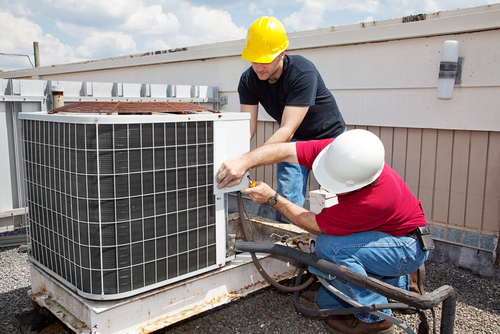
Florida Class B Air Conditioning Contractor Exams
Florida Class B Air Conditioning Contractors must pass two exams prior to obtaining their license. Do not sign up to take your exams until you obtain your books and begin studying for them!
Florida Class B Air Conditioning Contractor License Exam
- Testing Method: Computer-based testing
- Testing Company: Pearson Vue©
- Number of Questions: 80
- Types of Questions: Multiple Choice
- Time Allowed: 300 Minutes
- Minimum Passing Score: 70%
- Subjects Involved:
Pre-Installation (12%)
- Reading and interpreting plans and specifications
- Symbols
- Scales
- Recommending changes to plans and specifications
- Equipment costing
- Equipment efficiency
- Design requirements
- Recommending different types of equipment
- Equipment costing
- Effects on equipment efficiency
- Heating and cooling loads
- Seasonally adjusted and energy efficiency ratio
- Air flow and duct design
- Psychrometrics diagrams
- Pump curves
- Fan curves
- Applying energy conservation principles
- Effects on equipment efficiency
- Florida energy codes
- R and U factors
- Seasonally adjusted energy efficiency ratio
- Pump curves
- Fan curves
- Calculating thermal resistance
- R and U factors
- Florida energy codes
- Discussing EER and SEER with owners and architects
- EER and SEER calculations
- Florida energy Codes
- Florida Building Energy Rating System
- ARI listings
- Cost analysis and cost effectiveness
- Determining HVAC load (Heating, Ventilation, Air Conditioning)
- Florida energy codes
- Heating and cooling load calculations
- R and U factors
- Determining material and equipment live load requirements
- Weights of materials
- Structural capabilities
- Rigging
- Designing HVAC systems (Heating, Ventilation, Air Conditioning)
- Equipment efficiency
- Psychrometrics
- Heating and cooling loads
- Seasonally adjusted and energy efficiency ratio
- Pressure and enthalpy relationship (diagrams)
- Air flow and duct design
- Pipe sizing
- Wiring requirements, procedures and techniques
- Types of controls and requirements
- Refrigeration requirements
- Designing duct systems
- Air flow and duct design
- Insulation requirements
- Determining proper HVAC equipment (Heating, Ventilation, Air Conditioning)
- Manufacturer's equipment
- Proper sizing
- Loads
- Psychrometrics
- Proper locations of equipment
- Codes
- Determining proper pipe sizes
- Pipe sizing tables
- Valves and fittings
- Liquid flow
- Resistance to flow and friction losses
- Determining proper control requirements
- Wiring requirements and procedures and techniques
- Types of control and requirements
- Air conditioning equipment
- Refrigeration equipment
- Determining proper fan motor requirements
- Wiring requirements, procedures and techniques
- Fans
- Fan motors
- Fan performance and CFM
- Determining proper pipe insulation
- Heating and cooling loads
- R and U factors
- Insulating techniques and requirements
- Determining proper compressor capacity
- Heating and cooling loads
- Refrigeration requirements
- Designing grease handling duct systems
- Air flow and duct design
- Sizing
- Fan and motor capabilities
- Filter requirements
- Fire and building codes
- Unloading, lifting and lowering materials
- Safety requirements
- Loading and lifting equipment
- Rigging techniques and requirements
- Determining proper mechanical equipment
- Fire codes
- Safety requirements
- Sprinkler and standpipe requirements
- Design requirements
- Determining proper pump requirements
- Pump types, capacities, and requirements
- Fluid flow
- Determining proper boiler requirements
- Boiler requirements
- Pressure requirements
- Steam properties
- Fuel gas requirements
- Fuel oil requirements
- Layout and determining pipes, valves, fittings, and related components
- Pump types and requirements
- Valve and fitting types and requirements
- Tank sizing
- Fluid flow
- Pipe fitting
- Metal pipe requirements
- Plastic pipe requirements
- Determining appropriate pipe sealants
- Welding
- Pipe fitting
- Metal pipe properties
- Plastic pipe properties
- Complying with piping plans and specifications
- Reading and interpreting plans and specifications
Sheet Metal Ducts (9%)
- Fabricating rectangular ducts under 2 ft
- Sheet metal ducts
- Fiberglass ducts
- Flex ducts
- Duct fittings
- Duct outlets and grilles
- Fabricating rectangular ducts over 2 ft
- Sheet metal ducts
- Fiberglass ducts
- Duct fittings
- Duct outlets and grilles
- Fabricating round ducts
- Sheet metal ducts
- Duct fittings
- Duct outlets and grilles
- Flex ducts
- Duct socks
- Taping duct seams
- Sheet metal ducts
- Fiberglass ducts
- Flex ducts
- Duct fittings
- Duct outlets and grilles
- Mastics and tapes
- Fabricating standing seams for sheet metal ducts
- Duct fittings
- Sheet metal ducts
- Fabricating snap lock seams for sheet metal ducts
- Duct fittings
- Sheet metal duct design requirements
- Fabricating other locks and seams
- Sheet metal ducts
- Fiberglass duct liners
- Fabricating interior lined sheet metal ducts
- Duct fittings
- Sheet metal duct design requirements
- Fabricating fittings for rectangular ducts
- Duct fittings
- Sheet metal ducts
- Fabricating fittings for round ducts
- Duct fittings
- Sheet metal layout
- Fabricating kitchen hoods
- Codes
- Sheet metal layout
- Fabricating kitchen hood exhausts
- Codes
- Sheet metal layout
- Fabricating drain pans
- Codes
- Sheet metal layout
- Fabricating rectangular ducts under 2 ft
Installation of Refrigeration and HVAC Systems (22%)
- Installing split system air conditioners
- Duct fittings
- Sheet metal ducts
- Air handlers
- Refrigerant piping
- Insulation requirements
- Thermostats
- Heat strips
- Condensate piping
- Condensate overflow protection
- Installing package system air conditioners
- Refrigeration cycles
- Thermostats
- Heat strips
- Condensate piping
- Condensate overflow protection
- Installing split system heat pumps
- Refrigeration cycles
- Condensers
- Air handlers
- Refrigerant piping
- Insulations
- Thermostats
- Heat strips
- Condensate piping
- Condensate overflow protection
- Fire stats
- Installing package heat pumps
- Refrigeration cycles
- Heat pump installation requirements
- Thermostats
- Heat strips
- Condensate piping
- Condensate overflow protection
- Fire stats
- Installing air-cooled systems
- Air-cooled condensers
- Air-cooled system installation requirements
- Installing water cooled systems
- Water-cooled condensers
- Water-cooled system installation requirements
- Installing secondary coolant systems
- Secondary coolant condensers
- Installing chilled water (or other temperature) systems
- Chilled water loops
- Water chillers and evaporators
- Release vents
- Air separators
- Installing water towers
- Evaporative cooling
- Water tower principles, forced drag and induced drafts
- Secondary coolant condensers
- Installing systems under 25 tons
- Installation techniques for system and associated components
- Dead loads
- Controls
- Wiring procedures and techniques
- Compressor capacities
- Installing absorption cycle systems
- Absorption cycles
- Absorption cycle refrigerants
- Refrigerant piping
- Installing ultra low temperature systems
- Multistage refrigeration
- Cryogenics
- Low temperature refrigerants
- Refrigeration equipment
- Refrigerant piping techniques
- Installing low and medium temperature systems
- Refrigeration equipment
- Refrigerant piping techniques
- CFCs, HFCs, and blends
- Refrigerant recovery and retrofit
- EPA regulations
- Installing walk-in coolers
- Refrigeration equipment
- Evaporators
- Expansion valves
- Defrost equipment
- Refrigerant piping
- Controls
- Installing reach-in coolers
- Refrigeration equipment
- Evaporators
- Expansion valves
- Defrost equipment
- Refrigerant piping
- Controls
- Installing ventilation systems (duct work)
- Air flow and duct designs
- Fire codes
- Scale dimensions
- Sheet metal ducts
- Fiberglass ducts
- Flex ducts
- Duct fittings
- Duct outlets and grilles
- Hanging requirements
- Installing pneumatic control systems
- Control requirements
- Pneumatic piping
- Pneumatic controls
- Installing ground water (geothermal) heat pumps
- Water cooled condensers
- Refrigeration cycles
- Installing smoke detectors
- Codes
- Equipment
- Installing exhaust (or make-up air) systems
- Fire codes
- Air flow and duct designs
- Sheet metal ducts
- Fan and motor capacities
- Installing grease handling duct systems
- Fire codes
- Air flow and duct designs
- Sheet metal ducts
- Filter requirements
- Installing ammonia refrigerant systems
- Absorption cycles
- Ammonia as a refrigerant
- Installing kitchen exhaust systems
- Air flow and duct designs
- Fan and motor capacities
- Sheet metal fabrications
- National and local fire and building codes
- Welding
- Testing and balancing systems
- Properties of air
- Fans
- Testing instruments
- Duct systems
- Register and grilles
- Equations
- Performing fire department required smoke tests
- Properties of air
- Fans
- Duct systems
- Codes
- Installing DDC control systems
- Control requirements
- DDC controls
- Installing split system air conditioners
Installation of Refrigeration and HVAC Equipment Components (14%)
- Installing air-cooled condensers
- Wiring requirements, procedures and techniques
- Air-cooled condenser characteristics
- Metal pipes
- Refrigerant piping
- Installing water-cooled condensers
- Wiring requirements and procedures and techniques
- Water tower characteristics
- Water-cooled condensers characteristics
- Secondary coolant condensers
- Metal pipes
- Plastic pipes
- Pipe fittings
- Refrigerant piping
- All refrigerants
- Installing hermetic and semi-hermetic compressors
- Wiring requirements, procedures and techniques
- Compressor characteristics
- Metal pipes
- Refrigerant piping
- All refrigerants
- Installing centrifugal compressors
- Wiring requirements, procedures and techniques
- Centrifugal compressor characteristics
- Types of refrigerants
- Power requirements
- Design operating pressures
- Motor efficiency ratings
- Metal pipe fittings
- Refrigerant piping
- Installing air handlers and evaporators
- Wiring requirements, procedures and techniques
- Metal pipes
- Refrigerant piping
- All refrigerants
- Control needs and requirements
- Air handlers and characteristics
- Installing fans and blowers
- Wiring requirements, procedures and techniques
- Air flow and duct designs
- Fans
- Fan motors
- Air handlers
- Condensers
- Installing motors for fans and blowers
- Wiring requirements, procedures and techniques
- Air flow and duct designs
- Fans
- Fan motors
- Air handlers
- Installing sheet metal duct work
- Sheet metal ducts
- Duct fittings
- Duct outlets and grilles
- Installing fiberglass duct work
- Fiberglass ducts
- Duct fittings
- Duct outlets and grilles
- Duct hanging techniques and requirements
- Installing other duct work (flexible)
- Air flex duct installation and fastening techniques
- Duct fittings
- Duct outlets and grilles
- Installing grilles, registers and volume dampers
- Air flow and duct designs
- Duct outlets and grilles
- Installing fire dampers and metal chimneys
- Fire codes
- Fire dampers and metal chimney installations and fastenings
- Installing refrigerant piping
- Brazing
- Refrigerant piping
- Pipe fittings
- Pipe hanging
- Pipe sizing
- Installing horizontally supported piping
- Weights of materials
- Structural capabilities
- Hangers
- Supports
- Installing flues
- Sheet metal duct installation techniques
- Duct fittings
- Gas codes
- Installing air filters
- knowledge of air filter installation techniques
- Installing warm air appliances (heaters)
- Heater installation techniques
- Wiring procedures and techniques
- Fire codes
- Installing gas appliances
- Fuel gases
- Gas appliances
- Installing controls
- Wiring procedures and techniques
- Gas codes
- Installing fuel oil appliances
- Fuel oils
- Fuel appliance installation techniques
- Types of controls and requirements
- Wiring requirements, procedures and techniques
- Installing heat exchangers
- Heat transfer
- Installing controls
- Wiring requirements, procedures and techniques
- Installing receivers
- Receivers
- Refrigerant piping
- Local codes
- Installing heat strips
- Wiring requirements, procedures and techniques
- Heat strips
- Fire stats
- Fire codes
- Installing copper tubing and fittings
- Copper tubing
- Refrigerant piping
- Brazing
- Pressure testing
- Installing other tubing or fittings
- Metal pipes
- Welding
- Brazing
- Pressure testing
- Welding and brazing copper tubing
- Welding
- Copper tubing
- Silver brazing copper to steel joints
- Welding
- Copper tubing
- Metal pipes
- Flaring copper tubing
- Copper tubing
- Flaring tools
- Soft soldering copper tubing
- Brazing
- Copper tubing
- Soldering swaged joints
- Brazing
- Copper tubing
- Metal pipe
- Swaging tools
- Welding metal with filler rods
- Metal pipes
- Welding
- Installing steel pipes
- Piping and steel pipes
- Pipe fittings
- Hangers
- Welding
- Threading pipes
- Pipe fittings
- Metal pipes
- Cutting mild steel with oxy-acetylene torches
- Oxy-acetylene torches
- Metal pipe characteristics
- Installing refrigerant tubing under 2 inches
- Brazing
- Copper tubing
- Flaring tools
- Swaging tools
- Copper fittings
- Oxy-acetylene torches
- Installing refrigerant tubing 2 inches or over
- Brazing
- Copper tubing
- Flaring tools
- Swaging tools
- Copper fittings
- Oxy-acetylene torches
- Installing refrigerant metering devices
- Expansion valves
- Capillary tubes
- Brazing
- Copper tubing
- Installing heat pump reversing valves
- Reversing valves
- Copper tubing
- Low-voltage wiring
- Installing thermostatic expansion valves
- Expansion valves
- Copper tubing
- Installing capillary tube metering devices
- Capillary tubes
- Copper tubing
- Installing liquid line dryers and filters
- Dryer and filters
- Copper tubing
- Vacuum systems
- Refrigerant recovery
- Installing suction line dryers and filters
- Dryers and filters
- Copper tubing
- Vacuum systems
- Refrigerant recovery
- Installing heat pump line dryers and filters
- Dryers and filters
- Copper tubing
- Vacuum systems
- Refrigerant recovery
- Installing oil traps
- Oil traps
- Copper tubing
- Installing bellows-type temperature controls
- Control requirements
- Temperature requirements
- Copper tubing
- Bellows-type temperature controls
- Installing chilled water low temperature controls
- Low temperature controls
- Control requirements
- Temperature requirements
- Low-voltage wiring
- Installing dual, high or low-pressure control switches
- High and low pressure control characteristics
- Brazing
- Copper tubing
- Pressure requirements
- Low-voltage wiring
- Control installation techniques
- Installing temperature controls
- Temperature requirements
- Pressure requirements
- Control requirements
- Low-voltage wiring
- Installing oil-pressure safety control switches
- Pressure requirements
- Safety requirements
- Pipe fittings
- Control characteristics
- Low-voltage wiring
- Installing summer-winter switch-over controls
- Low-voltage wiring
- Temperature requirements
- Control requirements
- Installing thermostats
- Low-voltage wiring
- Temperature requirements
- Control characteristics
- Installing water regulating valves
- Low-voltage wiring
- Temperature requirements
- Control requirements
- Pressure requirements
- Bellows-type temperature controls
- Water valves
- Installing pressure regulators and strainers
- Design pressure requirements
- Control characteristics
- Hot gas bypasses
- Installing humidity and thermostatic controls
- Control characteristics
- Calibrating controls
- Low-voltage wiring
- Manufacturer's recommendation
- Installing pneumatic controls
- Pneumatic piping
- Pneumatic controls
- Air compressors
- Control requirements
- Installing solid-state controls
- Manufacturer's recommendations
- Codes
- Soldering electrical connections
- Brazing
- Electrical wiring procedures and techniques
- Installing transformers
- Electrical wiring procedures and techniques
- Read wiring diagrams
- Installing capacitors
- Electrical wiring procedures and techniques
- Installing contactors
- Electrical wiring procedures and techniques
- Installing current relays
- Electrical wiring procedures and techniques
- Installing safety disconnects
- Electrical wiring procedures and techniques
- Installing defrost timers
- Electrical wiring procedures and techniques
- Control requirements
- Wiring diagrams
- Placement of electrical wires
- Electrical relationship between current voltage and resistance
- Installing defrost heaters
- Electrical wiring procedures
- Control requirements
- Defrost operation
- Installing defrost thermostats
- Electrical wiring procedures and techniques
- Control requirements
- Wiring diagrams
- Placement of electrical wires
- Electrical-relationship between current voltage and resistance
- Installing air-pressure switches
- Pneumatic piping
- Pneumatic controls
- Air compressors
- Wiring diagrams
- Placement of electrical wires
- Electrical-relationship between current voltage and resistance
- Installing electric humidistats
- Electrical wiring procedures and techniques
- Humidity control requirements
- Wiring diagrams
- Placement of electrical wires
- Electrical relationship between current voltage and resistance
- Installing electronic air cleaners
- Electrical wiring procedures and techniques
- Wiring diagrams
- Placement of electrical wires
- Electrical relationship between current voltage and resistance
- Manufacturer's recommendations
- Wiring three-phase equipment
- Electrical wiring procedures and techniques
- Wiring diagrams
- Placement of electrical wires
- Electrical relationship between current voltage and resistance
- Wiring single-phase equipment
- Electrical wiring procedures and techniques
- Wiring diagrams
- Placement of electrical wires
- Electrical relationship between current voltage and resistance
- Installing three-phase equipment
- Electrical wiring procedures and techniques
- Wiring diagrams
- Placement of electrical wires
- Electrical relationship between
- Current voltage and resistance
- Installing single-phase equipment
- Electrical wiring procedures and techniques
- Installing capacitor start motors
- Electrical wiring procedures and techniques
- Wiring diagrams
- Placement of electrical wires
- Electrical relationship between current voltage and resistance
- Fan motors
- Compressor requirements
- Installing shaded-pole motors
- Electrical wiring procedures and techniques
- Fan motors
- Wiring diagrams
- Placement of electrical wires
- Electrical relationship between current voltage and resistance
- Installing split-phase motors
- Electrical wiring procedures and techniques
- Fan motors
- Wiring diagrams
- Placement of electrical wires
- Electrical relationship between current voltage and resistance
- Installing fan blades
- Fans
- Wiring diagrams
- Placement of electrical wires
- Electrical relationship between current voltage and resistance
- Installing fan control switches
- Electrical wiring procedures and techniques
- Fan motors
- Control requirements
- Low-voltage wiring
- Installing hermetic compressor overload protectors
- Electrical wiring procedures and techniques
- Safety requirements
- Installing fan belts
- Fans
- Motor amperage requirements
- Installing drive pulleys
- Fans
- Pulley ratios
- Motor amperage requirements
- Installing limit control switches
- Control characteristics
- Safety requirements
- Installing solenoid coils
- Electrical wiring procedures and techniques
- Low-voltage wiring
- Installing magnetic starters
- Electrical wiring procedures and techniques
- Installing starting relays
- Electrical wiring procedures and techniques
- Installing duty-motor protection devices
- Electrical wiring procedures and techniques
- Installing motor controllers
- Motor controllers
- Proper motor and overcurrent protection
- Circuit breakers and fuses
- Electrical wiring procedures
- Controls
- Installing plastic pipes and fittings
- Plastic pipes and fittings
- Different grades of pipe
- Pressure testing
- Safety codes
- Joining materials
- Cleaning and gluing materials
- Installing of surge protectors
- Installation techniques
- SP Sizing
- Installing of phase monitors
- PM installation
- PM sizing
- Installing of geothermal systems
- Sizing of geothermal loops
- Knowledge of loop types
- Installing air-cooled condensers
Maintenance Analysis of Refrigeration and HVAC Systems (10%)
- Reading pressure and enthalpy diagrams for various refrigerants
- Pressure and enthalpy relationships
- Reading pressures
- Gauges
- Refrigeration testing equipment
- Reading and analyzing electrical circuits
- Electrical wiring procedures and techniques
- Low-voltage wiring
- Electrical testing equipment
- Testing current relays
- Electrical wiring procedures and techniques
- Electrical testing equipment
- Testing capacitors
- Electrical wiring procedures and techniques
- Electrical testing equipment
- Testing defrost thermostats
- Controls
- Manufacturer's recommendations
- Testing high-voltage transformers
- Electrical wiring procedures and techniques
- Electrical testing equipment
- Testing high-voltage relays
- Electrical wiring procedures and techniques
- Electrical testing equipment
- Testing low-voltage relays
- Low-voltage electrical wiring procedures and techniques
- Electrical testing equipment
- Amprobes
- Ohmmeters
- Testing magnetic starters
- Electrical wiring procedures and techniques
- Electrical testing equipment
- Testing potential relays
- Electrical wiring procedures and techniques
- Electrical testing equipment
- Testing appropriate motor terminals
- Electrical wiring procedures and techniques
- Electrical testing equipment
- Determining operating pressures of refrigeration or air conditioning systems
- Design pressure requirements
- Refrigerant pressure gauges
- Pressure and temperature relationships
- Determining air volumes
- Air flow and duct designs
- Velometers
- Pitot tubes
- Manometers
- Volume flow meters (flow hoods)
- Determining changes in enthalpy
- Refrigeration testing equipment
- Psychrometrics
- Thermometers
- Psychrometers
- Determining wet bulb and dry bulb temperatures
- Refrigeration testing equipment
- Psychrometrics
- Thermometers
- Psychrometers
- Determining current draw (amperage)
- Electrical wiring procedures and techniques
- Electrical testing equipment
- Amprobes
- Volt-ohm meters
- Determining voltages
- Electrical wiring procedures and techniques
- Electrical testing equipment
- Amprobes
- Volt-ohm meters
- Determining power consumption
- Electrical wiring procedures and techniques
- Electrical testing equipment
- Determining working pressure in pipes
- Pressure testing gauges
- Access valves
- Testing non-pressure type storage tanks
- Tanks and pollution controls
- Using testing equipment (velometer, amprobe, volt-ohm meter, vacuum gauges, etc.)
- Electrical testing equipment
- Refrigeration testing equipment
- How and when to use equipment
- Using chlorine and halogen leak detecting devices
- Refrigeration testing equipment
- How and when to use devices
- Reading pressure and enthalpy diagrams for various refrigerants
Maintenance Service of Refrigeration and HVAC Systems (14%)
- Using nitrogen regulators
- Pressure regulators
- Using other gas regulators
- Pressure regulators
- Repairing semi-hermetic compressors
- Electrical wiring procedures and techniques
- Mechanical methods and procedures
- Repairing hermetic compressors
- Electrical wiring procedure and techniques
- Mechanical methods and procedures
- Repairing centrifugal compressors
- Electrical wiring procedure and techniques
- Mechanical methods and procedures
- Repairing blowers
- Electrical wiring procedures and techniques
- Fans
- Fan motors
- Calibrating air sensitive thermostats
- Electrical wiring procedures and techniques
- Fans
- Fan motors
- Calibrating chilled-water low temperature controls
- Low temperature controls
- Control requirements
- Low-voltage wiring
- Temperature requirements
- Refrigeration testing equipment
- Calibrating dual or low pressure control switches
- High and low pressure controls
- Brazing
- Copper tubing
- Refrigeration testing equipment
- Calibrating pneumatic controls
- Pneumatic piping
- Pneumatic controls
- Air compressors
- Calibrating proportional thermostats
- Low-voltage wiring
- Temperature requirements
- Control requirements
- Refrigeration testing equipment
- Calibrating summer-winter switch-over controls
- Low-voltage wiring
- Temperature requirements
- Control requirements
- Refrigeration testing equipment
- Adjusting thermostatic temperature controls
- Low-voltage wiring
- Temperature requirements
- Control requirements
- Refrigeration testing equipment
- Adjusting thermostatic motor controls
- Low-voltage wiring
- Temperature requirements
- Control requirements
- Refrigeration testing equipment
- Electrical wiring procedures and techniques
- Adjusting superheat setting on expansion valves
- Expansion valves
- Control requirements
- Refrigeration testing equipment
- Superheat
- Adjusting oil-pressure safety controls
- Pressure
- Gauges
- Fittings
- Control requirements
- Low-voltage wiring
- Refrigeration testing equipment
- Adjusting temperature controls
- Temperature requirements
- Pressure requirements
- Control requirements
- Low-voltage wiring
- Refrigeration testing equipment
- Adjusting high pressure safety cutouts
- High and low temperature controls
- Electrical wiring procedures and techniques
- Low-voltage wiring
- Control operating requirements
- Refrigeration testing equipment
- Pressure gauges
- Adjusting freezer controls
- Control operating requirements
- Low-voltage wiring
- Temperature measurements
- Adjusting defrost time clocks
- Control requirements
- Low-voltage wiring
- Electrical wiring procedures and techniques
- Temperature measurement
- Adjusting bellows-type temperature controls
- Control requirements
- Temperature requirements
- Bellows-type temperature controls operating requirements
- Operating oil safety control solid state pressure sensing devices
- Pressure requirements
- Safety requirements
- Control operating requirements
- Low-voltage wiring
- Refrigeration testing equipment
- Aligning drive pulleys
- Mechanical alignments
- Adjusting tension of v-belts
- How and when to adjust
- Calibrating electric actuating valves
- Mechanical operation requirements
- Refrigeration testing equipment
- Calibrating electric humidistats
- Humidity control requirements
- Control requirements
- Low-voltage wiring
- Refrigeration testing equipment
- Reversing the rotation of three-phase or single-phase motors
- Electrical wiring procedures and techniques
- Electrical testing equipment
- Starting seized hermetic compressor motors
- Electrical wiring procedures and techniques
- Electrical testing equipment
- Adjusting crankcase pressure regulating valves
- Pressure regulators
- Pressure measurement
- Evaporators
- Compressors
- Adjusting evaporator pressure regulating valves
- Pressure regulators
- Pressure measurement
- Evaporators
- Superheat
- Adjusting unloaders
- Pressure measurement (gauges)
- Effect of pressure on compressor capacities
- Cleaning cooling towers
- Cleaning chemicals
- Scale properties
- Water deposit controls
- Bleed-off
- Cleaning foreign matter from systems
- Cleaning chemicals
- Solvents
- Cleaning water-cooled condensers
- Cleaning chemicals
- Water-cooled condensers
- Organic water problems
- Cleaning condensate drain lines
- Safety switches
- Cleaning and adjusting techniques
- Repairing condensate drains
- Condensate pipe installation and traps
- Using nitrogen regulators
Safety and Equipment (10%)
- Wearing hearing and head protection
- Safety requirements
- Installing warning signs and barricades
- Safety requirements
- Lock-out/tag-out
- Wearing eye and face protection
- Safety requirements
- Using respiratory protection
- Safety requirements
- Digging with backhoes, trenchers or tractors
- Safety requirements
- Using overhead hoists and cranes
- Safety requirements
- Weights
- Riggings
- Using ventilation devices
- Safety requirements
- Toxic materials
- Using mobile equipment (e.g., forklifts, hi-lifts and cranes)
- Safety requirements
- Using ladders, scaffolds and rolling platforms
- Safety requirements
- Assembly
- Using various hand and power tools (e.g., power shears, wrenches and snips)
- Safety requirements
- Proper operation procedures
- Using air compressors
- Safe operating pressures
- Safety requirements
- Wearing hearing and head protection
Energy Management (5%)
- Conduct energy testing
- Duct pressure testing
- Blower door tests
- Effects of the building envelope on the operations of the HVAC
- Promote energy efficiency equipment
- Energy efficient equipment
- Programmable and Wi-Fi enabled thermostats
- Zoning system
- Energy recovery ventilators (ERVs)
- Cost analysis and cost effectiveness
- Green buildings and renewable energy
- Complete energy forms
- Energy form software
- Building material efficiencies (R and U factors)
- How to calculate thermal resistance
- Preform load calculations
- Building materials (R and U Factors)
- Window efficiencies (heat gain)
- Impact of outside air change requirements
- Florida energy codes
- Heating and cooling load calculations
- How to calculate thermal resistances
- Conduct energy testing
Indoor Air Quality (4%)
- Manage indoor air quality
- UV bulbs
- Filter types
- Humidity control systems
- Air cleaners
- Air flows (test and balances)
- Effects of poor air quality on humans
- Manage indoor air quality
- Official list of subjects for the Class B Air Conditioning exam
Florida Class B Air Conditioning Business and Finance Exam
- Testing Method: Computer-based testing
- Testing Company: Pearson Vue©
- Number of Questions: 120
- Types of Questions: Multiple Choice
- Time Allowed: 390 Minutes
- Minimum Passing Score: 70%
- Subjects Involved:
Establishing the Contracting Business (11%)
- Determining the Business Organizational Structure
- Business structure laws and regulations
- Fiduciary responsibilities of officers and directors
- Open vs. closed corporations
- Organizational charts and chain of responsibilities
- State and local licensure requirements
- Tax advantages and/or liabilities for various business structures
- Develop the Business Plan
- Accounting practices
- Local marketplace
- Scope of contractor license
- Establish Relationships with Other Professionals
- Accountant specialization
- Attorney specialization
- Insurance types and limitations
- Underwriting requirements for bonding
- Acquire Fixed Assets
- Advantages/disadvantages of business location
- Advantages/disadvantages of lease vs. purchase
- Obtain Insurance
- knowledge of accounting practices
- Advantages/disadvantages of various types of insurance
- Coverages and limitations of insurance
- Determining the Business Organizational Structure
Managing Administrative Duties (26%)
- Develop the Business
- Availability of staffing for business operation
- Income sources
- Markets and market share.
- Determine Outsourced Services
- Determine Business Overhead
- FICA
- Advertising costs (business cards, dues, printing, etc.)
- Communication costs (cell phones, land lines, etc.)
- Cost of sales (travel expenses)
- Federal unemployment (FUTA)
- General liability rates
- Lease expenses
- Loan financing expenses (interest, etc.)
- Medicare rates
- Rent costs
- State unemployment (SUTA)
- Utility costs
- Worker’s compensation
- Preparing Bids/Proposals
- Accounting principles
- AIA documents
- Business projections/goals current status
- Company overhead
- Contract documents
- Contract law
- Cost of financing projects
- Costs associated with growth
- General conditions costs of projects
- How to review contracts
- How to write offer
- Insurances associated with labor rates
- Labor productivity
- Statute of frauds
- Taxes associated with labor rates
- Components of valid contract
- Purchase Materials/Supplies
- Depreciative costs
- Fundamentals of Uniform Commercial Code
- Inventory system operation (FIFO, etc.)
- Invoice approval systems
- Negotiating skills
- Purchasing systems
- Receiving systems
- State sales tax laws
- Statute of frauds
- Vendors in area
- Prepare Invoices/Draw Requests
- Basic math skills
- Calculation of percentage of work completed
- Contract/subcontract documents
- How to prepare invoices/draw requests
- Lien laws
- Develop a Safety Program
- Drug testing regulations
- MSDS sheets
- OSHA regulations
- Maintain Insurance
- General terms and definitions used in policies
- Insurance policies
- Limits of insurance
- Various types of insurance
- Various types of risk
- Managing Contracts
- Contract law
- Contract scope
- Job completion schedules
- Lien laws
- Mediation and arbitration processes
- Local building code requirements
- Tort law
- Risk management
- Develop the Business
Managing Trade Operations (10%)
- Schedule Trade Operations
- Critical path method (CPM)
- Delivery times
- Manufacturing times
- Requests for information (RFI)
- Sequencing trades
- Submittals/approval/fabrication process
- Maintain OSHA/Safety Records
- Document/record retainage requirements
- Penalties for non-compliance with OSHA
- Purchase/Order Materials & Supplies
- Accounting skills
- Basic math skills
- Job schedules
- Negotiation skills
- Organizational skills
- Plan reading skills
- Quality control
- Quantity take-offs
- Terms and abbreviations on invoices
- Types of building materials
- Leasing/Purchasing Equipment
- Cost of operation of equipment
- Depreciation
- Equipment operation
- Forecasted use of purchased equipment
- Interest costs for financing
- Maintenance
- Salvage resale values
- Support equipment required for equipment
- Tax credits associated with purchases
- Training needs for equipment
- Transportation costs for equipment
- Manage Material/Tool/Equipment Inventory
- Equipment maintenance procedures
- Inventory methods
- Schedule Trade Operations
Conducting Accounting Functions (32%)
- Manage Accounts Receivable
- Accounting principles
- Basic math skills
- Computer skills
- Lien laws
- Manage Accounts Payable
- Accounting principles
- Basic math skills
- Computer skills
- How to calculate discounts
- Lien laws
- Manage Cash Flow
- Accounting
- Banking
- Basic math skills
- Financial ratios
- File Tax Forms & Returns
- Accounting principles
- Basic math
- Federal tax laws
- Property tax laws
- Record keeping requirements
- Sales tax laws
- State tax laws
- Track Job Costs
- Accounting principles
- Basic math
- Calculate Employee Payroll
- Accounting
- State & federal tax laws
- Basic math
- Employment laws
- Employment/labor laws
- Hierarchy of garnishments
- Manage Accounts Receivable
Managing Human Resources (6%)
- Hire New Employees
- Employment laws
- Discrimination laws
- Interviewing skills
- Required forms for new hires
- Background checks
- Develop Human Resource Policies & Procedures
- Employment/labor laws
- OSHA
- Chain of custody (drug tests)
- Insurance regulations
- Evaluate Employees
- Employment/labor laws
- Hire New Employees
Complying with Government Regulation (15%)
- Comply with Federal Laws & Regulations
- FEMA (immigration components)
- OSHA
- Tax laws
- National Pollution Discharge
- Elimination System (NPDES)
- Environmental laws
- Comply with State Laws& Regulations
- Chapter 455 F.S.(Business & Professional Regulation)
- Chapter 713 F.S. (Liens)
- 61G4 F.A.C.
- Worker’s Compensation
- Laws/DOR Sales/Use Tax
- Chapter 489, Part 1 F.S (Construction Contracting)
- Required continuing education
- CEU credit records
- License holder responsibilities
- Comply with Federal Laws & Regulations
- Official list of subjects for the Business and Finance exam
Florida Class B Air Conditioning Contractor Classes
You can sign up for your classes at any time and receive access to lecture videos, practice questions, tabbing and highlighting instructions, as well as to step-by-step explanations on how to solve typical Class B A/C Contractor Exam Problems. The A/C B Contractor Classes prepare you for the trade and business exams (Florida Class B AC Contractor Testing Schedule). AC Contractor’s Test in Florida is arguably one of the most difficult AC Exams in the US. Let Contractor Campus provide you with the training you need to prepare for them. Below are the two training courses you can take to prepare for the Florida Class B Air Conditioning and Florida Business and Finance exams. You must pass both exams in order to obtain the Class B Air Conditioning Contractor’s License in Florida (every contractor, regardless of trade must pass the Business part). To sign up for the Florida Class B Air Conditioning and Florida Business Classes, simply click on the "enroll" buttons below and checkout; this will allow you to receive immediate online access to the Florida Class B Air Conditioning and Florida Business classes. All students have access for an unlimited amount of time (we stay with you until you pass all the tests and get your AC License). All live refresher online classes are on Saturdays from 8:30 AM - 4:30 PM (ET); we teach how to solve math problems for trade, business, and finance problems. For a list of upcoming classes for the Florida Class A Air Conditioning Contractor Exams click on the link within the course description below.
-
s_construction2 1
Credenciales enviadas por correo electronico
Acceso ilimitado (no hay limite de tiempo)
Videos educativos
Preguntas de practica para los libros
Conceptos claves
Soluciones de ejercicios de matematica paso a paso
Clases de repaso en vivo (incluido)
Tutorías 1-a-1 (cargo extra)
$699.00$699.00 -
s_construction_business 1
Credenciales enviadas por correo electronico
Acceso ilimitado (no hay limite de tiempo)
Videos educativos
Preguntas de practica para los libros
Conceptos claves
Soluciones de ejercicios de matematica paso a paso
Clases de repaso en vivo (incluido)
Tutorías 1-a-1 (cargo extra)
$399.00$399.00
Florida Class B Air Conditioning Contractor Books
The set of books includes all required references for both the Class B Air Conditioning and Business and Finance exams. Orders placed before 2 PM are shipped the same day via UPS and a tracking number is emailed before 3 PM.
FLORIDA CLASS B AIR CONDITIONING - SET DE LIBROS SIN TABS INCLUYE TODOS LOS LIBROS PARA EXAMEN TECNICO Y ADMINISTRATIVO
FLORIDA CLASS B AIR CONDITIONING - SET DE LIBROS CON TABS INCLUYE TODOS LOS LIBROS PARA EXAMEN TECNICO Y ADMINISTRATIVO
List of Books for the Air Conditioning Class B Contractor Trade Exams
-
OSHA (CFR 29 Part 1926) is the leading safety...CFR (OSHA) Title 29 Part 1926 (1903 1904 1910
r84 1$30.00$30.00 -
Air Conditioning and Refrigeration Troublesho...Air Conditioning and Refrigeration Troublesho
r10 1$273.64$273.64 -
The Florida Contractor's Manual is used as on...Florida Contractors Manual
r138 1$181.23$181.23 -
The Pipefitter's Handbook is the primary refe...Pipefitters Handbook
r248 1$53.97$53.97 -
NFPA 90A is the standard for the installation...NFPA 90A Installation of Air Conditioning and
r228 1$173.88$173.88 -
The Standard for the Installation of Warm Air...NFPA 90B Installation of Warm Air Heating and
r229 1$176.68$176.68 -
NFPA 96 is the standard for controlling the v...NFPA 96 Standard for Ventilation Control and
r231 1$173.82$173.82 -
The Fibrous Glass Duct Construction Standards...Fibrous Glass Duct Construction Standards
r124 1$154.31$154.31 -
The HVAC Duct Construction Standards is a SMA...HVAC Duct Construction Standards - Metal and
r163 1$241.38$241.38 -
Energy Systems Analysis and Management is pub...Energy Systems Analysis and Management
r114 1$130.70$130.70 -
The Trane Ductulator is a tool used for duct ...Trane Ductulator
r299 1$30.00$30.00 -
Refrigeration & Air Conditioning Technology i...Refrigeration & Air Conditioning Technology
r260 1$171.08$171.08 -
Publication by the University of Florida whic...Energy Efficient Building Construction in Flo
r113 1$57.57$57.57 -
The Florida Mechanical Code is currently on i...Florida Building Code - Mechanical
r130 1$120.37$120.37 -
The 2020 edition of the Florida Energy Conser...Florida Building Code - Energy Conservation
r312 1$71.86$71.86
List of Books for the Business and Finance Exam
Please note that the Florida Contractor's Manual is required for both the business and the trade exams.
-
The Florida Contractor's Manual is used as on...Florida Contractors Manual
r138 1$181.23$181.23 -
Chapter 455 of the Florida Statutes (Business...Florida Statutes Chapter 455
r462 1$33.61$33.61 -
The A201 is published by the AIA and establis...A201 General Conditions of the Contract for C
r5 1$83.78$83.78 -
Please beware of companies selling photocopie...A401 Standard Form of Agreement between Contr
r6 1$83.78$83.78 -
Please beware of companies selling photocopie...A701 Instructions for Bidders
r7 1$58.41$58.41 -
Builder's Guide to Accounting, is used for th...Builders Guide to Accounting
r67 1$46.28$46.28
